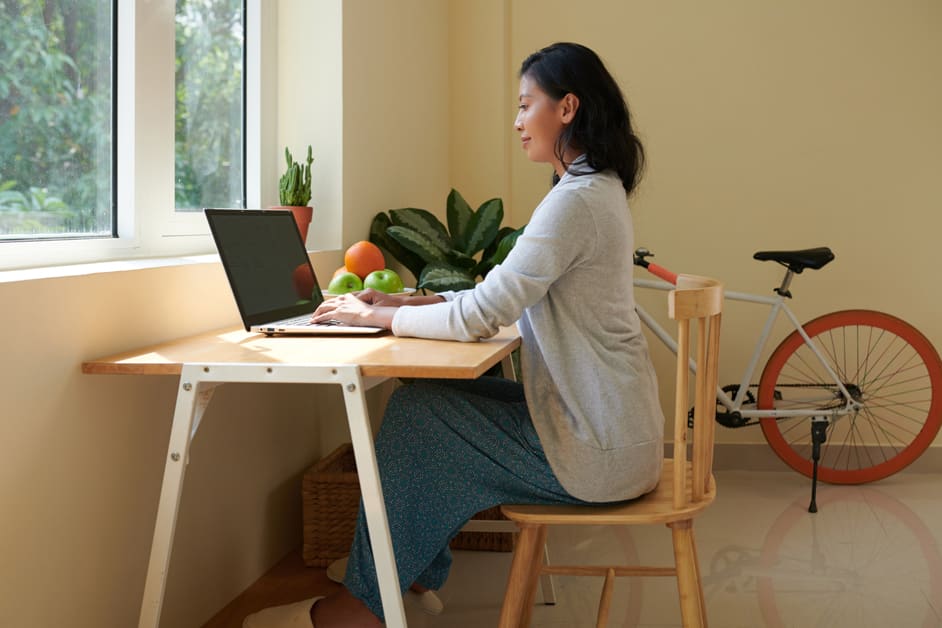Introduction
Ergonomics is the science of designing a workspace for the individual. It helps reduce knee stress, which can be great for those with pain or knee problems. To get proper ergonomics, three things are key: chair height, monitor viewing angle and location, and work surface or table.
Other things to think about are feet support and leg stretching. These include things like foot wedges and sit-to-stand desks. To get optimum knee health, ergonomics must include the right chair, good lighting, correct temperature, and the right chair type.
The goal is to have a position that takes minimal effort to maintain. This helps reduce physical stress on your knees. Knowing the right chairs and benches, as well as how to adjust, will help you stay pain-free while using the products in your day-to-day activities.
The Impact of Ergonomics on Knee Health
Ergonomics is key for healthy knees. It can help lower the chance of knee injury and lessen any pain. How we use our knees when we sit, stand, and move has a big impact. Here’s how to use ergonomics correctly for healthy knees:
- Sit with your feet flat on the floor and your knees at a 90-degree angle.
- When standing, keep your feet shoulder-width apart and your knees slightly bent.
- Avoid sitting or standing for long periods of time.
- When lifting objects, bend at the knees rather than the waist.
- When exercising, use proper form to avoid putting strain on your knees.
Musculoskeletal Disorders
Musculoskeletal disorders are a common work-related medical issue, with over 500,000 reported each year. Causes can include incorrect working habits, overexertion, trauma or repetitive motions. Knee pain and discomfort is one of the most common musculoskeletal issues. Poor ergonomics can lead to these disorders due to poor posture when working or inadequate support while seated.
To reduce the risk of musculoskeletal disorders in the knees, try the following:
- Adjust chair height. Make sure feet are flat on the floor and the top of the desk is within reach of the worker’s forearms in a comfortable sitting position. Use a footrest if desk height does not provide proper ergonomic seating.
- Provide lumbar support. Use an adjustable backrest with lumbar support for added comfort when sitting for long periods.
- Place monitors at eye level. This will prevent straining or bending the neck downwards towards screens.
- Replace worn office furniture. Worn out cushions, armrests and other surfaces could lead to increased risks for developing musculoskeletal injuries. Encourage employees to replace old furniture with newer chairs fitted with adjustable features for optimum comfort.
Posture and Proper Body Mechanics
Incorrect posture brings multiple health issues. Slouching can harm your knee health. Sitting in an uncomfortable position for long periods increases the risk of knee injury. Poor posture puts extra strain on your knees, reducing their ability to support your body and aiding you in physical activities.
To keep healthy knees, practice proper posture and use good body mechanics.
- Sit with a straight back and feet flat on the floor while working.
- Stand with weight balanced between both feet.
- Raise frequently while sitting.
- Change positions often.
- Keep good alignment while walking or running.
- Use ergonomic chairs, desks, and keyboards.
Stretch regularly to keep muscles around the kneecaps strong and flexible. Low-impact activities like swimming and cycling are less taxing than running or jumping rope. Implement these tips into daily routines to protect against age-related knee issues and prevent injury due to poor posture for long periods of time.
Prolonged Sitting
Prolonged sitting is a huge risk to knee health. Sitting in the same position for a long time places extra strain and stress on the knees, leading to pain. Muscles around the knees then tighten and cause joint stiffness, making it hard to move around. Weak muscles due to poor ergonomics can also affect kneecap alignment, increasing the chance of damage and inflammation.
To help minimize knee injury, people should:
- Vary their body positions and practice good ergonomic principles.
- Stand up and change position to help relieve tension.
- Make sure furniture is set so feet are flat and hips and knees level.
- Stretch legs occasionally to stretch the muscles connected to the knee caps and decrease tension.
Ergonomic Interventions
Knee health is important. To reduce strain, consider ergonomic interventions. An ergonomic chair or desk, a footrest, and proper body alignment are all beneficial.
Let’s look into different ergonomic interventions for knee health:
Adjusting Workstations
Ergonomics is all about safety and reducing physical strain on the body. To help protect the knees, it’s important to adjust workstations accordingly. Use the following guidelines for optimal workstation design:
- Get adjustable furniture for a more tailored fit for each user.
- Work surfaces should be at elbow height or a bit lower. This reduces the amount of bending and strain on the knees.
- Footrests may be used for comfort and to ease pressure around the knee joint.
- Seating can be adjusted so that hips are higher than knees for comfort and posture.
- Position keyboards, mice, and video displays so that arms stay close to the body. This limits extra movements and reduces knee stress when using electronics.
- Take breaks and stretch or walk throughout the day to get blood circulating near the knee joints.
Using Proper Footwear
Ergonomics and proper footwear go hand in hand for knee health. Shoes shouldn’t destabilize ankles, restrict circulation, cause pressure points, or irritate skin. Here’s what to do:
- Choose shoes with flat, wide soles for arch support and shock absorption.
- Pick comfortable shoes for the activity.
- Opt for quality shoes made of breathable materials. Avoid nylon and leather uppers.
- Tight socks or stockings can reduce blood supply, so avoid those.
- Tie laces correctly.
- High arches need cushioning and arch support. Flatter feet need cushioning in the heel area and less arch support.
Ergonomic posture and supportive footwear will reduce knee strain, decrease pain, and protect joints.
Taking Regular Breaks
Take breaks from activities that involve kneeling. Stretch to improve posture and joint flexibility. Good knee alignment and leaning forward can relieve pressure on the joint.
Where possible, use ergonomic furniture and devices that are designed with knee positioning in mind. Examples include:
- Kneeling chairs
- Half-kneeling stools
- Adjustable seat cushions
These products can reduce the risk of damages due to poor ergonomics while working or during leisure activities.
Conclusion
It’s essential to set up your chair, desk, and seating to promote good posture and muscle balance. Use a chair with adjustable features like a waterfall-edge seat cushion and wide armrests for an upright posture that reduces strain on your back, neck, and shoulders.
When seated, the desktop should be at elbow level. It’s beneficial to alternate between standing and sitting, adjusting the chair and desk height accordingly. An upright posture can help you breathe better and reduce tension in the upper back, shoulders, and neck.
Ergonomic workstations are important for avoiding joint pain or injuries. Being aware of how we interact with our environment can help us have a more productive and comfortable workspace.
Frequently Asked Questions
Q1: What is ergonomics?
A1: Ergonomics is the science of designing and arranging things people use so that the people and things interact most efficiently and safely. It is applied to equipment and workplaces to ensure that they meet the needs of the people using them.
Q2: What is the importance of proper ergonomics for knee health?
A2: Proper ergonomics is important for knee health because it helps to ensure that the joints are not put under too much strain or pressure. Ergonomic design can reduce the risk of developing knee problems, such as tendonitis, bursitis, and osteoarthritis.
Q3: How can I improve my ergonomics to help protect my knees?
A3: There are several things you can do to protect your knees and improve your ergonomics. Make sure to take frequent breaks from sitting or standing for long periods of time, adjust your chair to the correct height, and make sure your feet are flat on the floor. Additionally, use ergonomic tools such as knee pads and ergonomic keyboards to help reduce strain on your knees.





